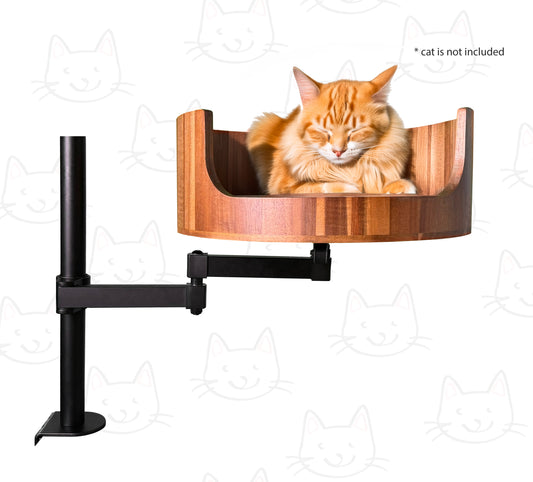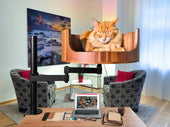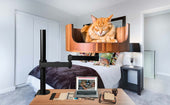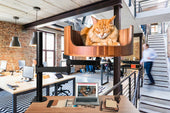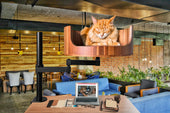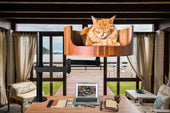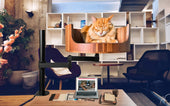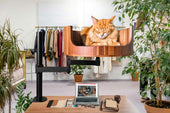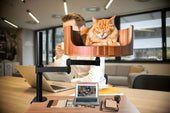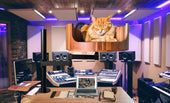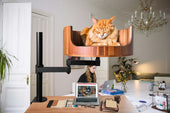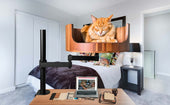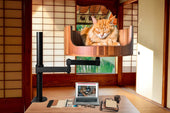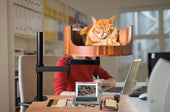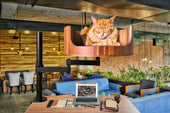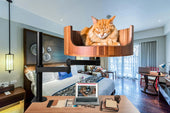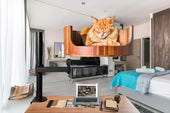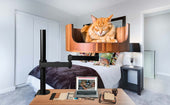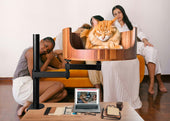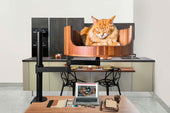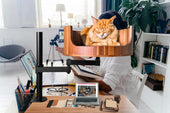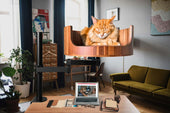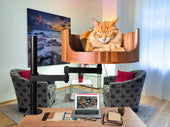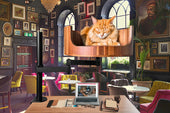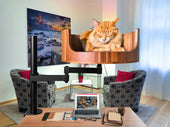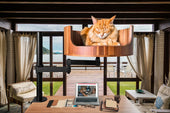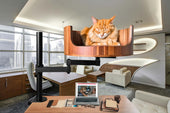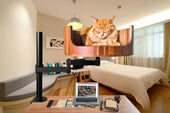
Why is my cat flicking her tail? Understanding the Behavior
Share
If you've ever observed your cat flicking her tail, you may have wondered what exactly she's trying to communicate. This common behavior can be confusing for cat owners, but understanding the reasons behind it can help you better interpret your feline friend's mood and needs. In this article, we'll delve into the various reasons why cats flick their tails, from communicating discomfort or anxiety to expressing excitement or playfulness.
First and foremost, tail flicking is a natural instinct for cats that serves as a form of communication. When a cat flicks her tail rapidly, it can indicate agitation or annoyance. This may be triggered by various factors such as a change in the environment, feeling threatened by another animal, or even being in pain. On the other hand, slow and deliberate tail flicks can signal curiosity, anticipation, or playfulness. By understanding these different tail movements, you'll be able to better gauge your cat's emotional state and respond accordingly to ensure her comfort and well-being.
1. Tail flicking in cats can indicate a range of emotions, from playfulness to irritation or fear.
2. Understanding your cat's body language, including tail flicking, can help you better communicate with and care for your feline companion.
3. It's important to pay attention to the context in which your cat is flicking her tail to determine the underlying cause.
4. Tail flicking may also be a sign of health issues, so monitoring this behavior is essential for early detection of potential problems.
5. By observing and interpreting your cat's tail flicking behavior, you can strengthen your bond and enhance your relationship with your pet.
Causes of Tail Flicking
There are several reasons why a cat may flick its tail, and understanding these causes can help you better interpret your cat's behavior. One common reason for tail flicking is a sign of agitation or irritation. Cats may flick their tails rapidly when they are feeling stressed or anxious, such as during a visit to the vet or when introduced to a new environment. Tail flicking can also indicate that a cat is feeling playful or excited. For example, a cat may flick its tail back and forth while stalking a toy or preparing to pounce on a perceived prey.
Body Language Interpretation
When a cat flicks its tail, it is important to consider other body language cues to determine the underlying emotion. Tail flicking along with dilated pupils, flattened ears, and a tense body posture may indicate that a cat is feeling threatened or defensive. On the other hand, if a cat's tail is flicking in a playful manner while its body is relaxed and ears are forward, it may be a sign of excitement or anticipation. Paying attention to the overall body language of your cat can help you better understand what they are trying to communicate.
Health Concerns
In some cases, excessive or frequent tail flicking may be a sign of a health issue that requires attention. Cats may flick their tails due to pain or discomfort, such as arthritis or injuries. It is important to monitor your cat's behavior and consult with a veterinarian if you notice any concerning changes in their tail flicking behavior. Your vet can help rule out any underlying medical conditions and provide appropriate treatment if necessary.
Desk Cat Nest FAQ
Why is my cat flicking her tail?
There are a few reasons why your cat may be flicking her tail. It could be a sign of agitation, excitement, or stimulation. Cats may flick their tails as a way to communicate their emotions or to release built-up energy.
Will using a Desk Cat Nest help with my cat's tail flicking?
While a Desk Cat Nest can provide your cat with a cozy and comfortable space to rest and relax, it may not directly address the underlying reason for her tail flicking. It is best to first determine the cause of your cat's behavior and address it accordingly.
How can I make my cat more comfortable in the Desk Cat Nest?
Ensuring that the Desk Cat Nest is placed in a quiet and peaceful area of your home can help create a soothing environment for your cat. You can also add soft blankets or cushions to make the nest even more inviting for your feline friend.
Is the Desk Cat Nest suitable for all cat breeds?
Yes, the Desk Cat Nest is designed to accommodate cats of all breeds and sizes. The spacious design of the nest allows for ample room for cats to curl up and relax comfortably.
Can the Desk Cat Nest be easily assembled and disassembled?
Yes, the Desk Cat Nest is designed for easy assembly and disassembly. The nest can be quickly put together and taken apart, making it convenient for storage or transportation if needed.
In conclusion, providing your cat with a comfortable and secure place to rest, such as the Desk Cat Bed, can greatly alleviate the stress and anxiety that may be causing her to flick her tail. The cozy and private space offered by this bed can help your cat feel safe and secure, reducing the need for constant tail flicking. Additionally, the plush bedding and supportive design of the Desk Cat Bed promotes relaxation and encourages a sense of calm for your feline friend. Invest in the Desk Cat Bed today to ensure your cat's comfort and well-being.

